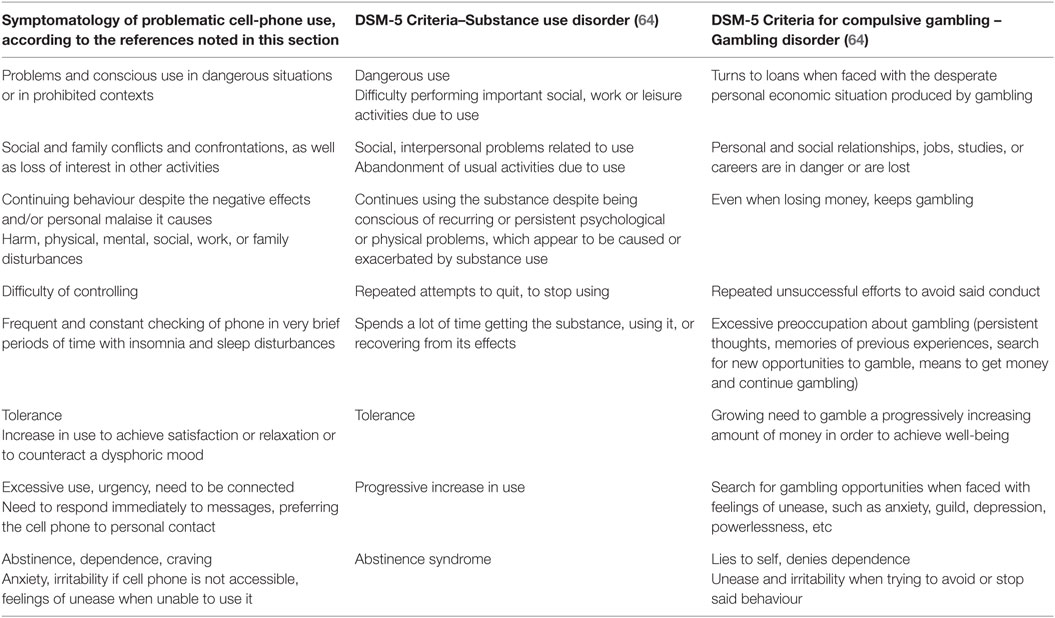The pervasive influence of smartphones in modern society has raised concerns about the potential for smartphone addiction, often associated with the Fear of Missing Out (FOMO). This academic examination aims to explore the concept of smartphone addiction, its associated symptoms, and the possible linkages to psychological disorders, focusing on anxiety. While establishing a direct causal relationship between smartphone addiction and behavioral or mood disorders remains challenging, existing research suggests an association between excessive smartphone use and anxiety. This paper concludes with a position supported by research, emphasizing the need for intervention and treatment strategies for problematic smartphone use.
Symptoms of Problematic Smartphone Use (PSU)
Problematic Smartphone Use (PSU) is characterized by excessive smartphone use that interferes with personal, educational, and occupational activities, often leading to emotional alterations and withdrawal symptoms when usage is restricted (Billieux et al., 2015). Although no causal relationship has been definitively established, an association between anxiety and PSU has been observed (Tavakolizadeh et al., 2014; Kim et al., 2015). This suggests that individuals with pre-existing anxiety or depression may be more susceptible to PSU, which can manifest as a form of psychological dependency (Richardson et al., 2018).
Nomophobia, FOMO, and Textiety
The criteria used by various researchers to identify smartphone addiction vary, and within the last decade, terms such as “Nomophobia” (No-Mobile-Phobia), “FOMO” (Fear-Of-Missing-Out), and “Textiety” have been coined to describe the anxieties and dependencies associated with smartphone use (Taneja, 2014). These terms reflect the multifaceted nature of smartphone addiction, and it is important to consider these factors when assessing and diagnosing problematic usage patterns.
Internet Addiction Disorder (IAD)
Internet Addiction Disorder (IAD) is closely related to smartphone addiction, and studies have employed Diffusion Tensor Imaging (DTI) to examine its effects on brain structure and function. Research has shown widespread reductions in white matter integrity in individuals with IAD, which may contribute to behavioral impairments (Lin et al., 2012). This structural evidence aligns with behavioural observations in adolescents affected by IAD, underscoring the need for a comprehensive understanding of the phenomenon.
Dopamine and Smartphone Addiction
Dopamine, a neurotransmitter associated with the brain’s reward and pleasure centers, plays a pivotal role in smartphone addiction. The frequent gratification derived from activities like receiving ‘likes’ on social media posts or instant messaging responses triggers dopamine release, creating a compulsion loop similar to substance addictions (Maharaj, 2018). This neurological mechanism sheds light on the emotional reactions individuals experience when their smartphones are inaccessible.
Treatment and Intervention
To address smartphone addiction and its associated anxieties, cognitive behavioural therapy (CBT) and similar treatment modalities offer viable solutions. The focus should be on replacing negative habits with positive endeavours, cultivating diverse interests, and seeking social support from friends, family, and peers (Nakhid-Chatoor, 2018). The recovery from smartphone addiction is possible, and it necessitates a holistic approach.
Conclusion
Although a direct causal relationship between smartphone addiction and behavioural or mood disorders remains elusive, evidence suggests an association between excessive smartphone use and anxiety. The introduction of terms such as Nomophobia, FOMO, and Textiety highlights the multifaceted nature of smartphone addiction. Moreover, the structural and neurological evidence linking smartphone addiction to Internet Addiction Disorder emphasizes the need for a comprehensive understanding of these phenomena. To address problematic smartphone use, cognitive behavioural therapy and positive habit replacement are recommended, emphasizing the importance of social support. It is crucial to recognize smartphone addiction as a significant concern that warrants further research and intervention.
References
Billieux, J., Maurage, P., Lopez-Fernandez, O., Kuss, D. J., & Griffiths, M. D. (2015). Can disordered mobile phone use be considered a behavioral addiction? An update on current evidence and a comprehensive model for future research. Current Addiction Reports, 2(2), 156-162.
Kim, H. S., Hodgins, D. C., & Kim, B. N. (2015). Prevalence and psychosocial correlates of problematic smartphone use in Korean adolescents. Journal of School Health, 85(10), 859-869.
Lin, F., Zhou, Y., Du, Y., Qin, L., Zhao, Z., Xu, J., … & Lei, H. (2012). Abnormal white matter integrity in adolescents with internet addiction disorder: A tract-based spatial statistics study. PLoS ONE, 7(1), e30253.
Maharaj, A. (2018). Smartphone addiction: Dopaminergic connotations. Medical Journal, Armed Forces India, 74(4), 350-353.
Nakhid-Chatoor, M. (2018). Smartphones: The new era of mental health or a source of psychological distress? Journal of the Academy of Consultation-Liaison Psychiatry, 59(3), 321-324.
Taneja, M. (2014). Cellular Phone Addiction: A Growing Concern. The Indian Journal of Community Medicine, 39(2), 76-78.

